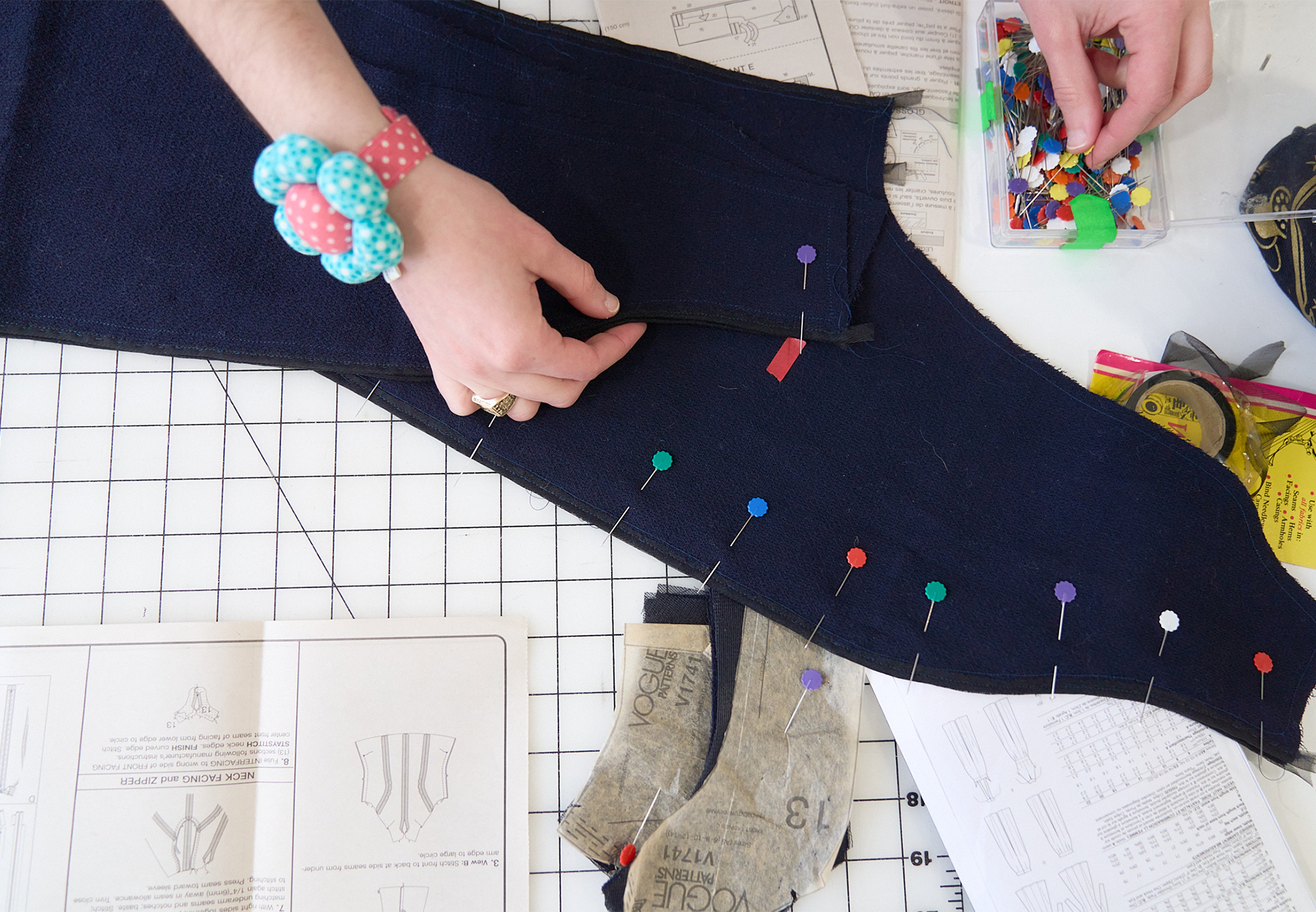In 2023 Chazot joined the Northwestern faculty, eager to engineer the next generation of performance textiles by bridging her deep understanding of materials with potential applications. “Northwestern is awesome for this because the students are really excited about doing mission-driven fundamental research,” Chazot says.
Her SPIn Lab is turning to biological polymers and fibers for inspiration. “If you look at nature, it does a lot of stuff that we can’t do. Can we harness that?” Chazot says. For instance, many natural materials contain building blocks that assemble themselves into structures. Such natural materials inspire the SPIn Lab’s quest to make dye-free colors, easy-to-recycle fabrics and materials that could be used as environmental sensors, among other applications.
In a corner of Chazot’s lab, an instrument labeled “Churro” squeezes out a naturally derived cellulose-based gel material, similar to how a churro’s sweet batter is pressed through a tube-like mold before it goes into the fryer. (Each piece of equipment in the SPIn lab has a dessert’s name — owing to the group’s reputation for making excellent baked goods for the department coffee hour. A machine that heats and presses samples is called Pound Cake. And a device that heats polymers to determine the temperature at which they burn has the moniker Crème Brûlée.)
Cellulose polymer molecules, which can self-organize into a liquid crystal phase, can arrange themselves into helical structures that vary based on how the material is processed. Depending on these arrangements, the cellulose liquid crystals interact differently with light — causing them to appear as different colors. With the Churro machine, Chazot and her team use extrusion-based methods to put force on the liquid containing the cellulose polymer chains, which in turn produces films — thin, flexible layers of polymeric material — that can be any color. The researchers plan to extrude thin fibers of these gels and then weave these fibers into textiles, with the goal of creating structurally colored fibers without having to add dyes, Chazot says.
Other materials interact with light that human eyes can’t perceive, such as infrared light from derived from shrimp shells, crab shells and fungi, to make materials that reflect infrared light. By reflecting this light, which humans perceive as heat, the materials keep what they cover cool, “despite the fact that they are in bright sunlight,” Chazot says.
With modifications to the chemistry of these materials, Chazot also envisions color-changing textiles that could serve a purpose beyond fashion — as sensors for environmental pollution. For instance, fibers that change color if they bind to certain metals in water could be used to monitor the water quality of streams and rivers near dye houses that use metal-based dyes. Such color-changing materials could enable biomedical applications as well. Resistance bands for physical therapy could change color when stretched to provide a visual indicator of a patient’s effort. Or a bed mat that changes color at pressure points could prompt medical staff to reposition a patient to prevent bedsores.

Cécile Chazot’s Sustainable Polymer Innovation Lab is working to make dye-free colors, easy-to-recycle fabrics and materials that could be used as environmental sensors.
Chitosan could also help give spandex fibers, which are found in most clothes, a second life. Spandex is typically unrecyclable. “So if your garment has spandex,” Chazot says, “it goes in the landfill.” This is because, in most cases, stretchy fibers contain a spandex core with another material (such as cotton or polyester) twisted around it. The spandex is so sticky that it’s difficult to strip it off the other fibers to separate them out for recycling.
But Chazot’s team has coated commercial spandex with chitosan, creating a layer that would prevent the spandex core from sticking to the surrounding fiber. Under the microscope, they’ve observed that the chitosan adheres well to a spandex core. But when exposed to a fairly mild acid, the chitosan dissolves, which would allow the cotton or polyester to come free of the spandex and be separated for recycling.
Both chitosan and cellulose are abundant, commercially available materials. Chazot hopes that the spin her group has put on these and other biomaterials can create new technologies that will someday reach the market, through startups or commercialization by textile companies.
“It’s only going to happen because we do the fundamental science,” Chazot says.
Chazot’s research fulfills the University priority to lead in sustainability. Learn more.









Reader Responses
This is such important work. Thank you for making it known to other readers and myself.
—Kevin Murphy '92 PhD, Nashville, Tenn., via Northwestern Magazine
Excellent article. Very well written.
Commercializing some of these biomaterials will be very interesting.
—Steven Carnes '84, '89 MBA, Netherlands, via Northwestern Magazine
No one has commented on this page yet.
Submit a Response